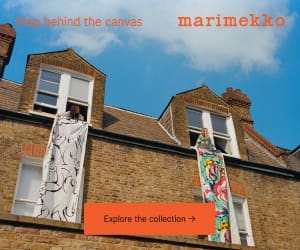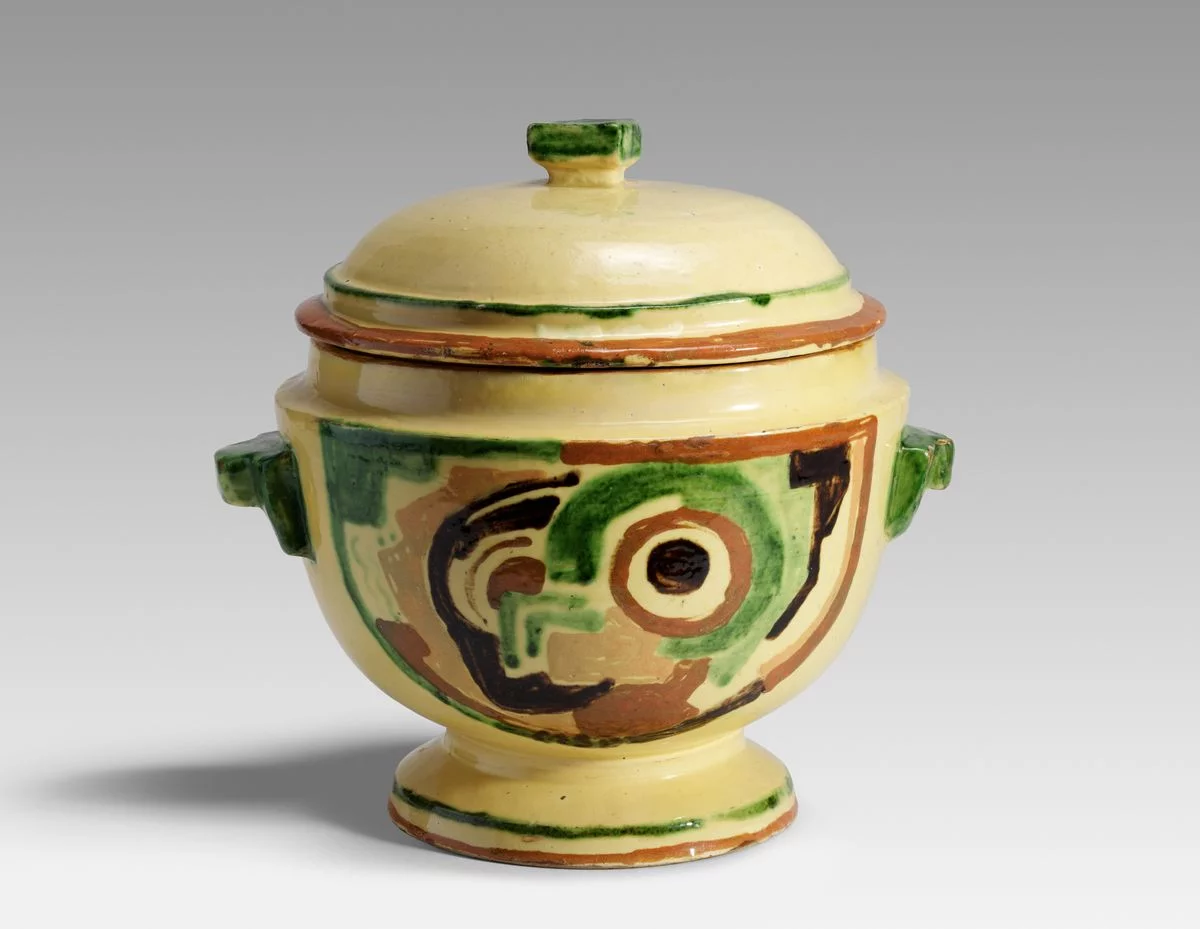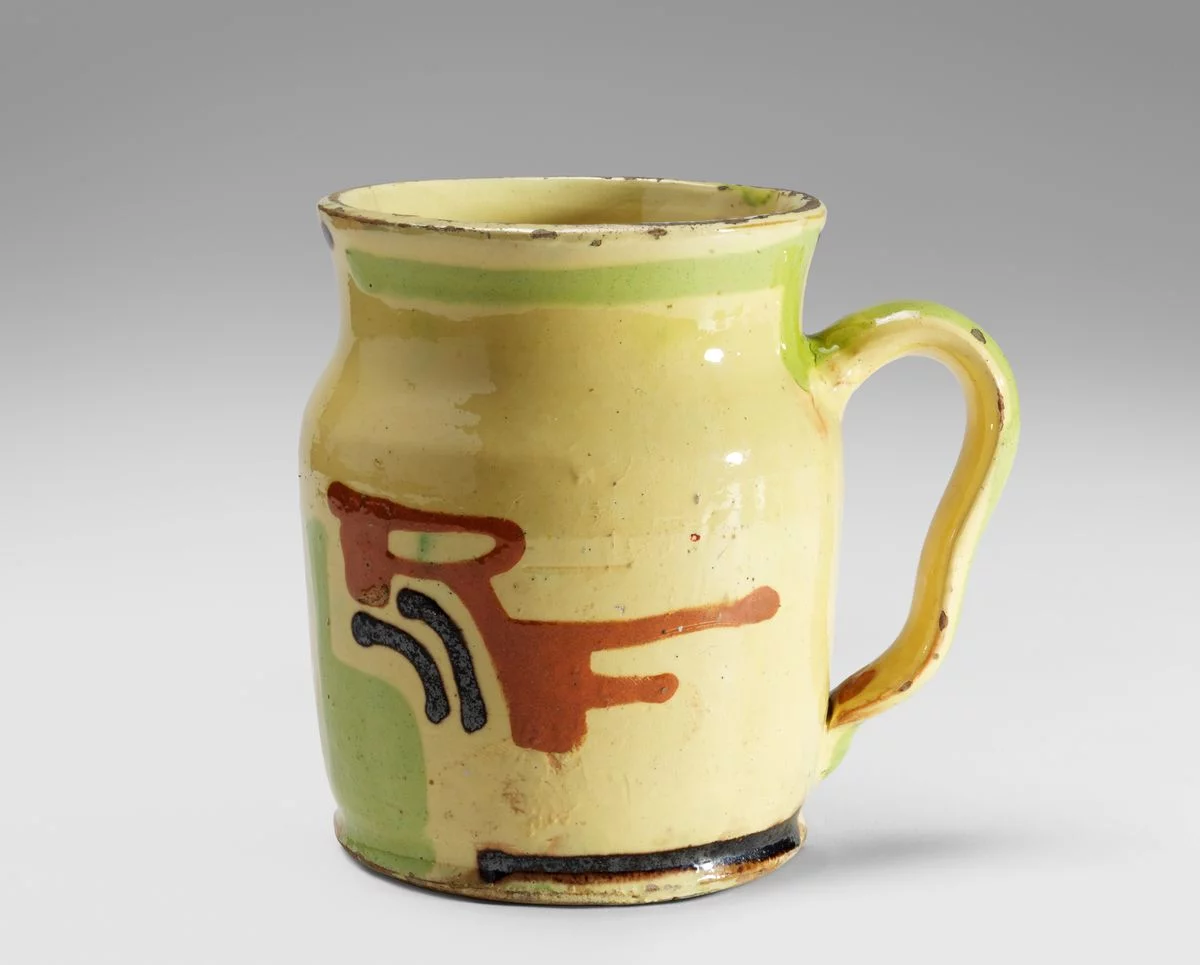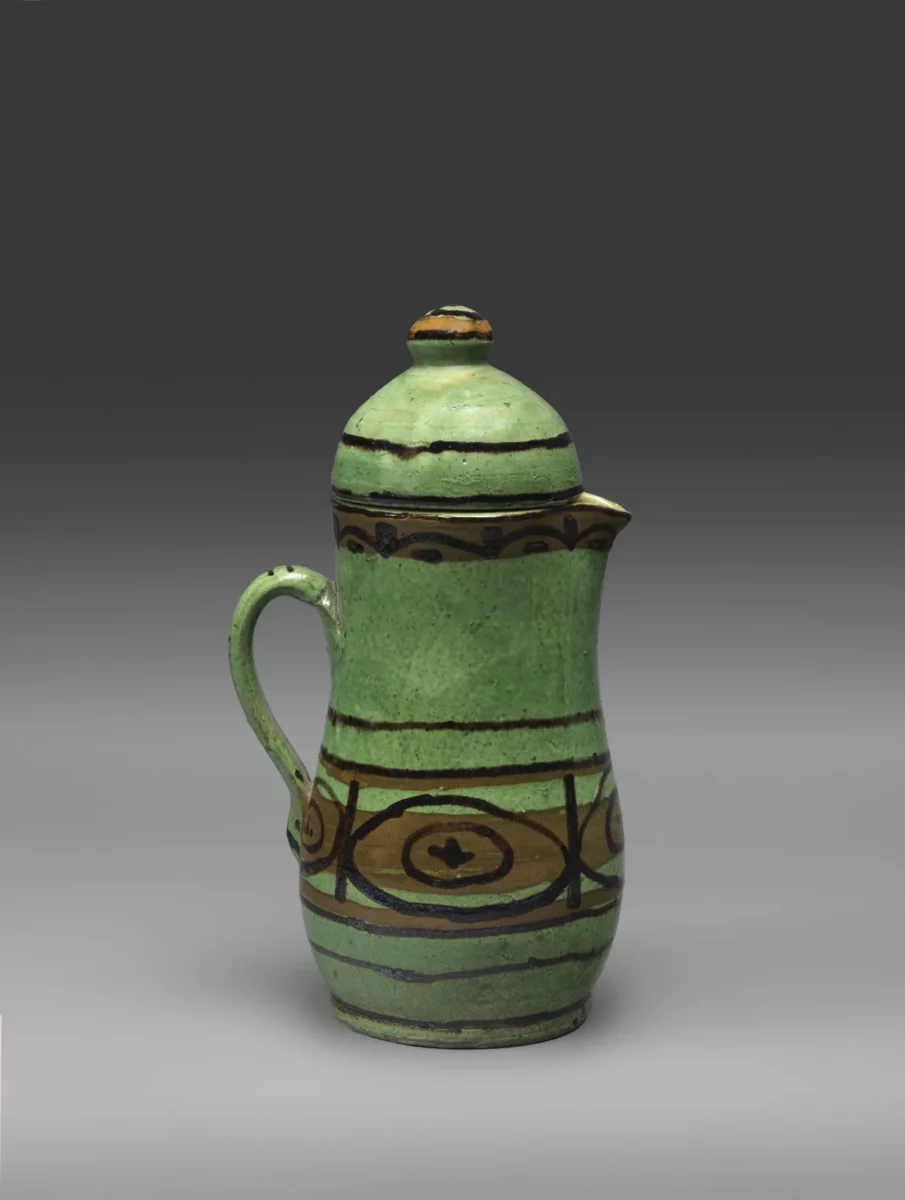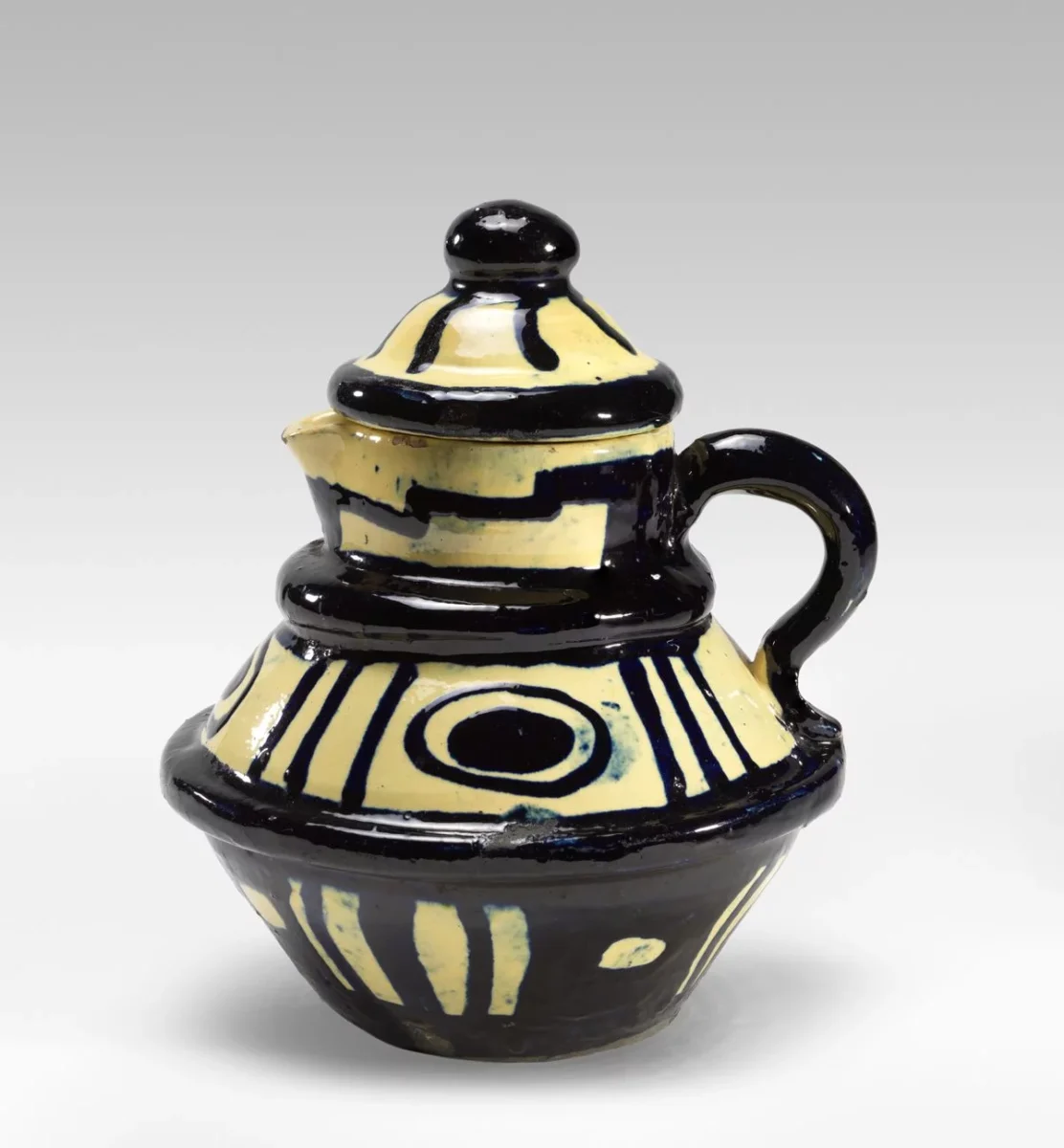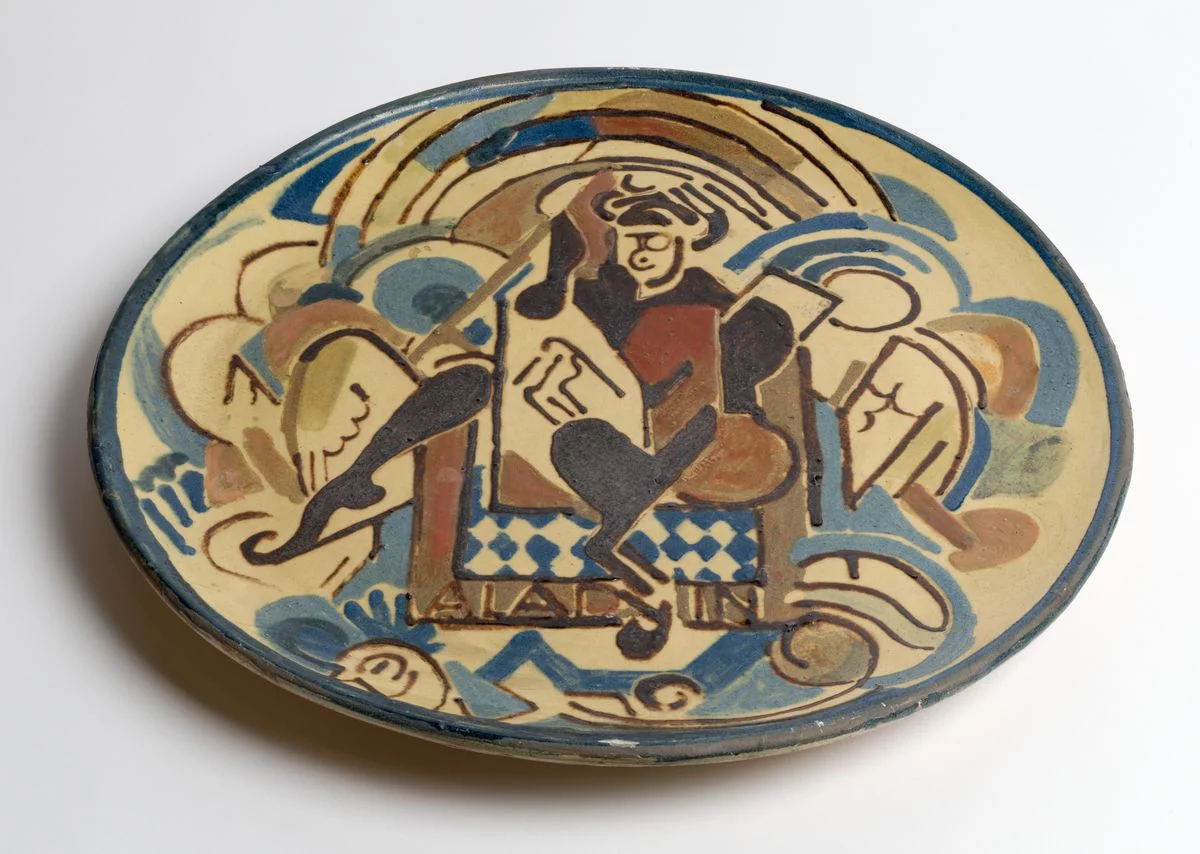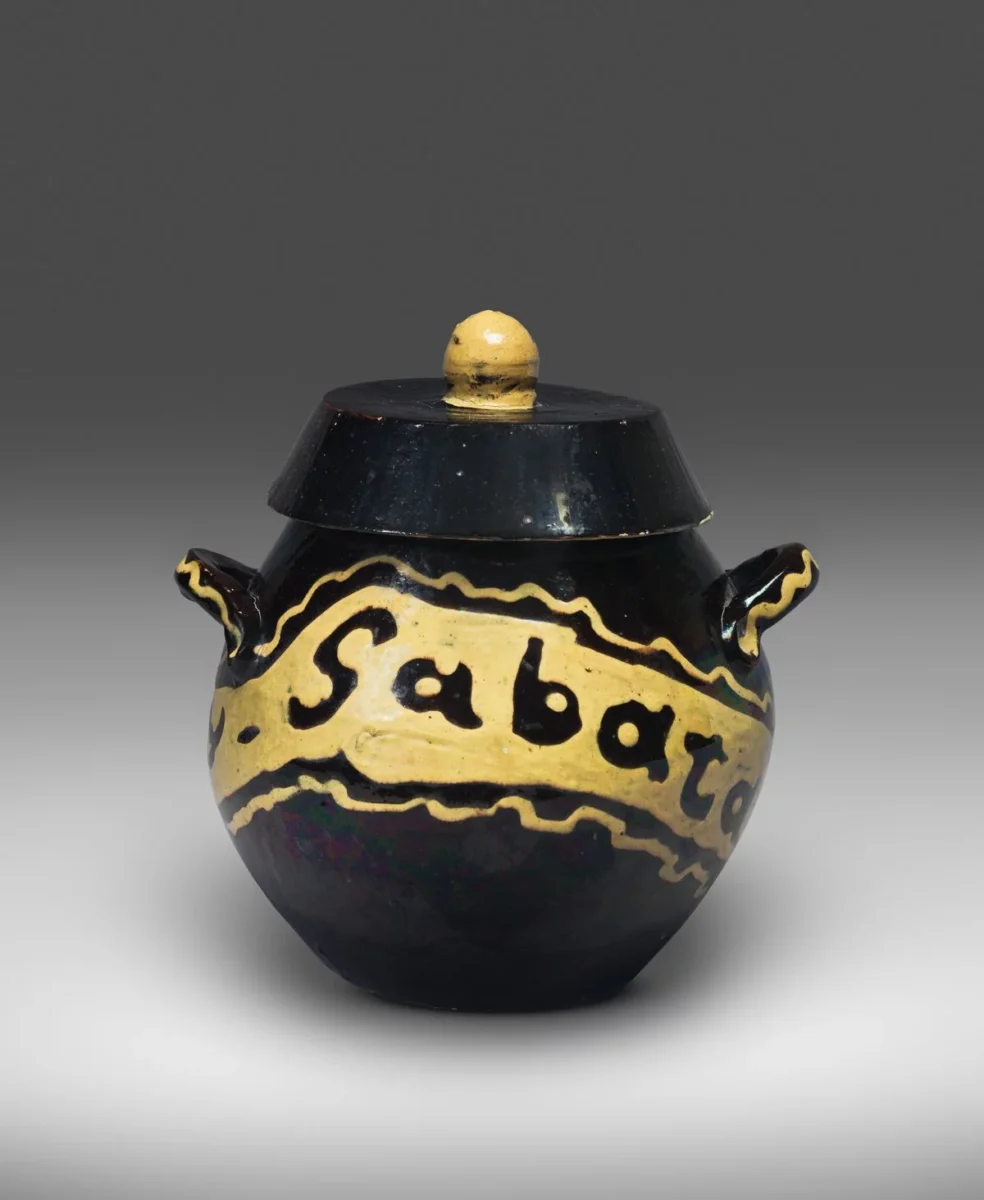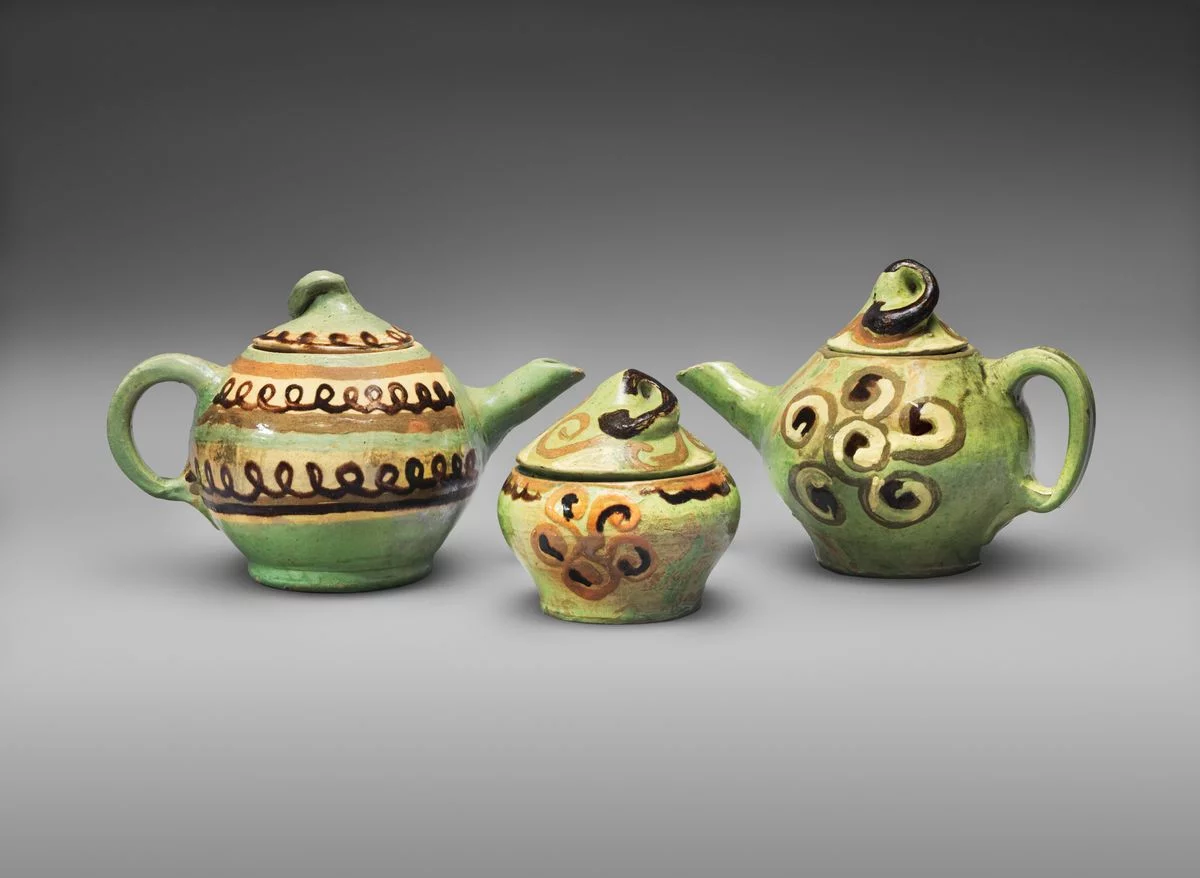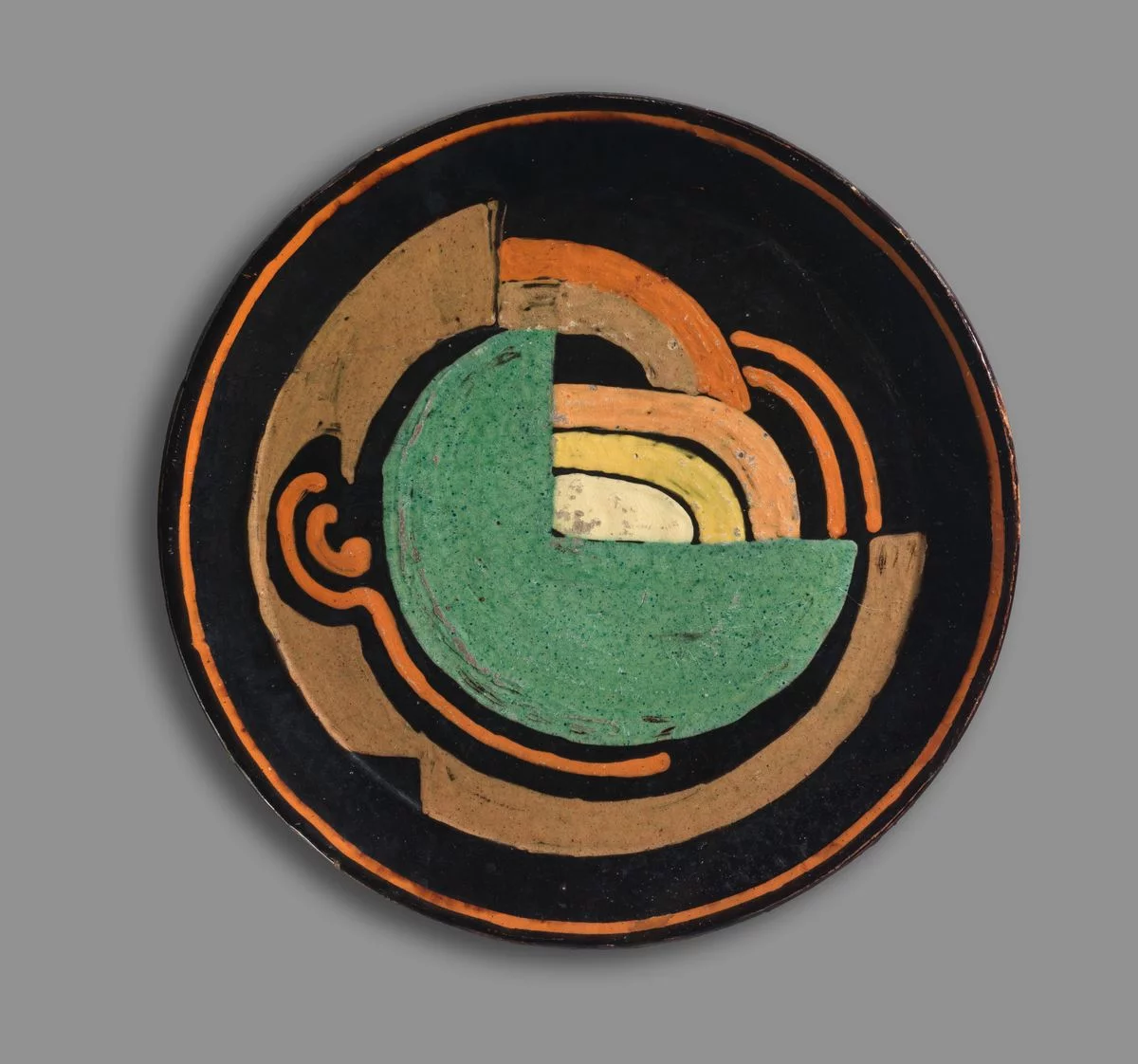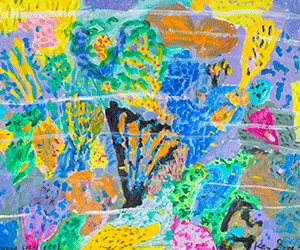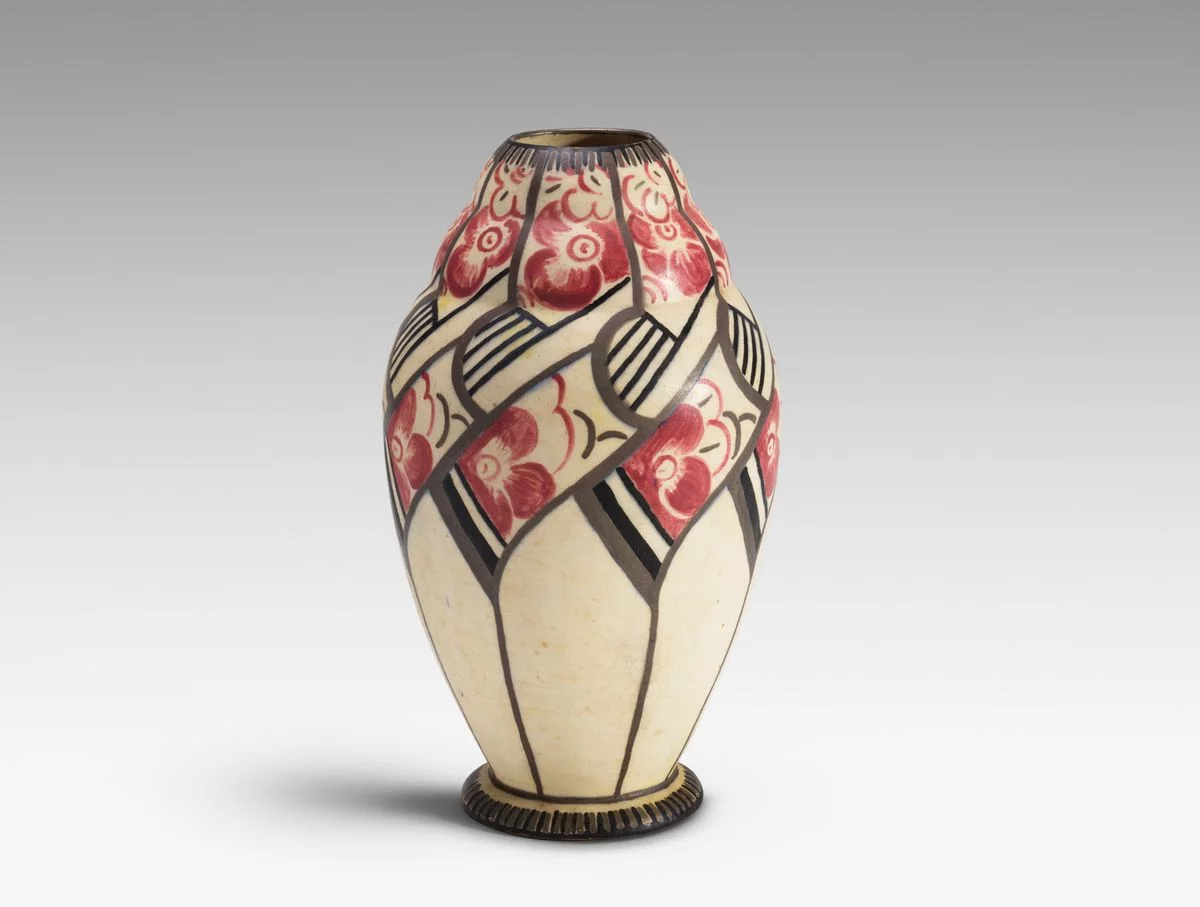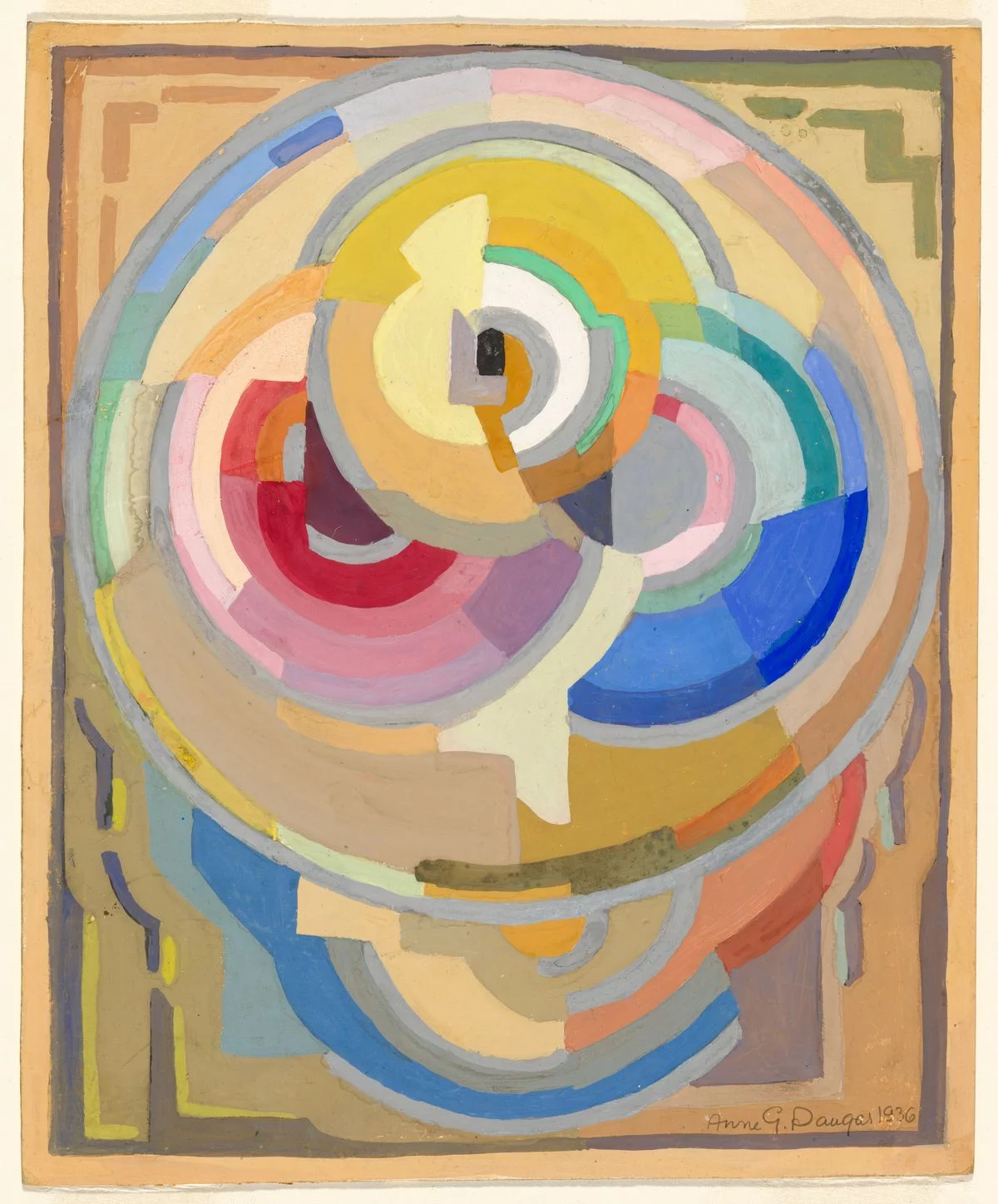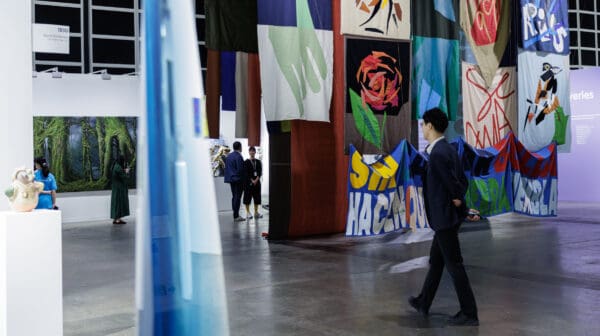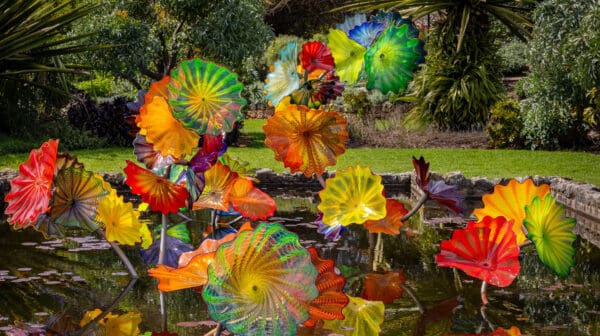For decades, Anne Dangar’s immense contributions to modern art remained largely unrecognised, her influence lingering at the margins of the Australian art world. Now, a major retrospective at the National Gallery of Australia in Canberra sheds light on her legacy, featuring over 180 objects that position her as a pioneer in European Cubism and Australian abstraction.
Born in Kempsey, New South Wales, in 1885, Dangar’s artistic journey took her from Sydney’s Julian Ashton Art School to an artist commune in France to the most avant-garde galleries of Paris, where she exhibited alongside European Cubists as their artistic peer. Her multidisciplinary practice seamlessly blends traditional forms with Modernist aesthetics, perhaps best exemplified by her ceramics that transform functional objects into art.
The opening gallery space traces Dangar’s evolution from early studies in Sydney to her transformative immersion in Cubism under André Lhote in Paris. Much of her early work was lost in a 1930 fire making it challenging to reconstruct this period, explains curator Dr Rebecca Edwards. “What I’ve done is present the limited work of hers we have alongside work by her friends and peers. The more I thought about it, the more I realised this communal, collaborative approach is so intrinsic to her practice.”
Returning to Sydney in late 1928, Dangar sought to introduce modern art to a conservative scene. Despite resistance, she taught Cubism from her studio, influencing a small but important generation of artists. “For me, this was a reminder that we are continually rewriting what we think we know,” says Edwards. “We thought Dorrit Black was the first to teach Cubism in Australia in 1931, but it’s Dangar a few years earlier. It shows just how courageous she was, how pioneering for her time.” A stunning Cubist still life by Dangar from this period is paired with works by her students, including Estelle Creed, another under-recognised female artist.
Dangar’s courageous spirit reemerged in 1930 when she connected with Albert Gleizes, a key figure in Cubism. Gleizes’ ideas around translation and rotation in Cubism – concepts he believed represented the cyclical nature of time – captivated Dangar and influenced much of her later work. When Gleizes invited Dangar to return to France live as part of his artist community Moly-Sabata in Sablons, a small town nestled beside the Rhone River, she accepted without question.
She lived at Moly-Sabata for 21 years, where she became a pillar of the community, working as a potter and teaching art to local children. The exhibition honours this role as teacher and mentor with a collaborative tapestry featuring her students’ designs (on loan from Musée des Beaux-Arts de Lyon) alongside student workbooks on Cubism. “These workbooks are so special, I think they show how Dangar sees Cubism as something for everybody,” says Edwards. “It’s not something that should be restricted to the realms of the solo (often male) genius.”
The next space delves into Dangar’s ceramic practice, showcasing her evolution from utilitarian, rustic pottery to more complex designs incorporating Cubist and Celtic elements. Her pieces, adorned with bold patterns and glazes, are a harmonious blend of functionality and Modernism. Dangar saw ceramics as the perfect canvas for Cubism, with the wheel’s circular motion and its resulting vessels mirroring Gleizes rotational, cyclical principles that so captivated her.
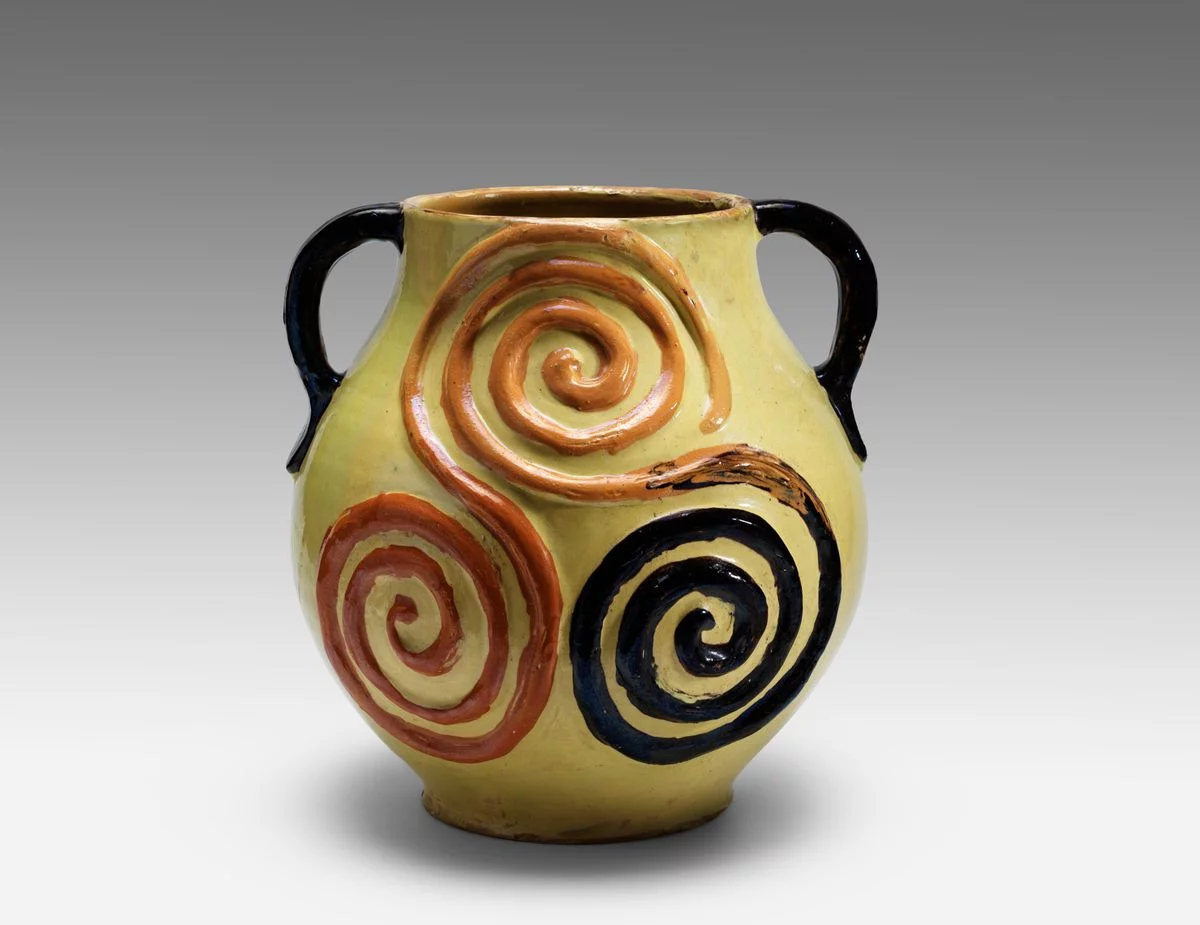
Woven throughout the show is Dangar’s lifelong connection – first as lovers then as friends – with fellow Australian artist Grace Crowley. Though they never met again after Dangar’s move to France, they maintained a prolific written correspondence. Dangar sent consignments of works on paper and ceramics to Crowley back in Australia, which she exhibited in her Sydney studio – arguably the first outing of truly Cubist works in the country. Dangar also sent Crowley written lessons in Cubism and abstraction, which, as becomes clear in this show, go on to directly influence the work of Crowley and her contemporaries, including Rah Fizelle and Ralph Balson.
“People often look for major paintings influencing other major paintings,” Edwards reflects. “But Dangar’s ceramics – her mugs, plates, pots – sat in Crowley’s apartment and in the studios of her Australian contemporaries. They were used daily, making them an overlooked yet powerful channel of influence.”
The final gallery cements Dangar’s international acclaim and enduring legacy. The room comes to life with some of her largest and most ambitious pieces. By the late 1930s, Dangar had transitioned from regional exhibitions to prestigious international venues, notably the 1937 Exposition Internationale des Arts et Techniques dans la Vie Moderne in Paris and the major survey Aspect actuel du cubism at the Salon d’Automne in 1938. She was among the few non-European artists included in the latter, underscoring her position as an important figure in the Cubist movement.
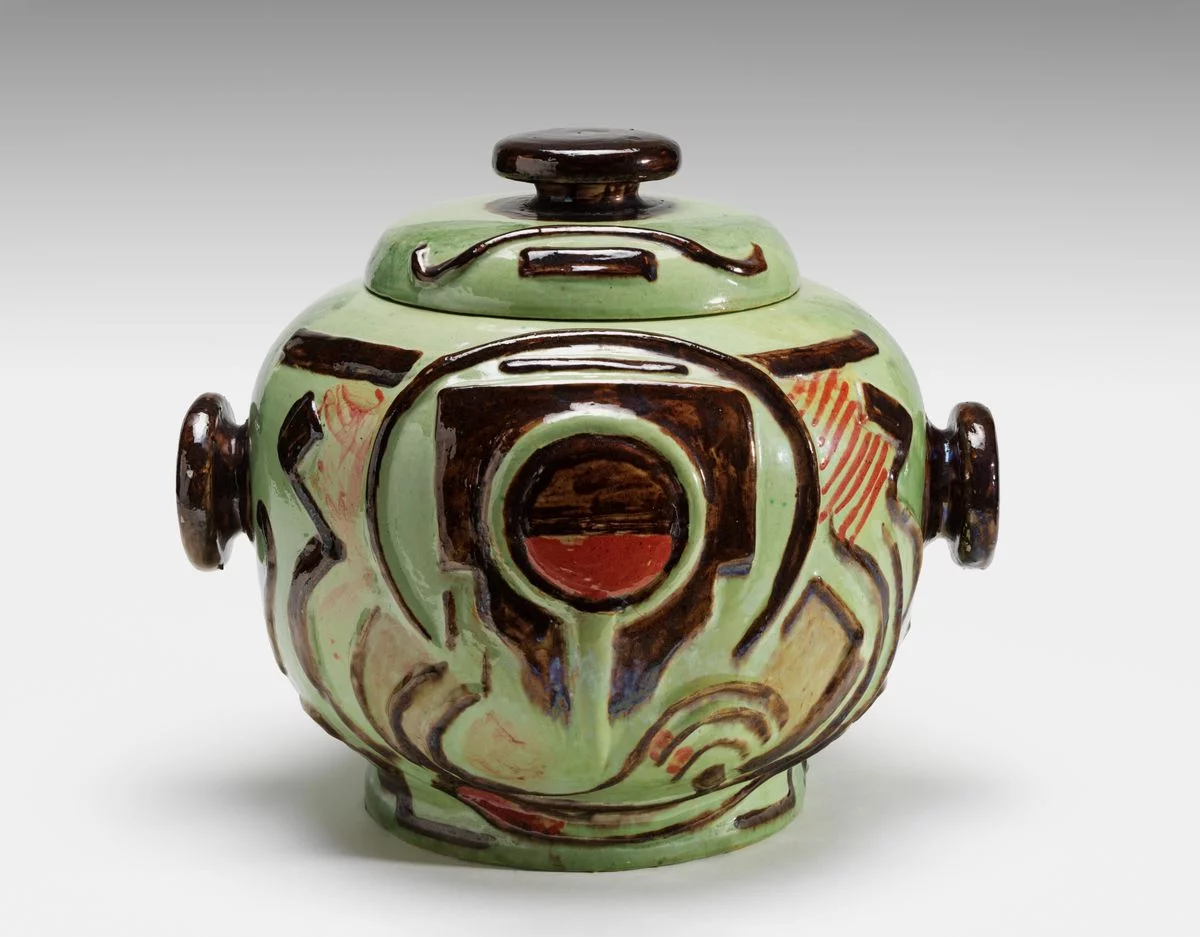
Just before exiting the show, visitors encounter Dangar’s final commissioned work – a small and unassuming tea set started before her death in 1951 and completed posthumously by her collaborators Lucie Deveyle and Jean-Marie Paquaud. For Edwards, it’s a poignant conclusion, symbolising a lasting impact and a strong community bond. “In Moly-Sabata, streets are named after her, her kiln still stands, and her pottery fills the houses,” she says. “The artist residency program continues her legacy, inspiring new generations of artists. In many ways, she remains alive there.”
Predating recognised pioneers, Dangar quietly reshaped Modern art in Australia and beyond. With this retrospective, her contributions finally receive the recognition they deserve.
Anne Dangar
National Gallery of Australia
On now—27 April

